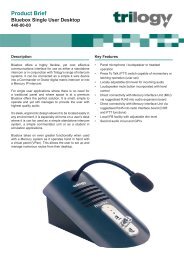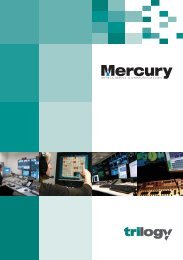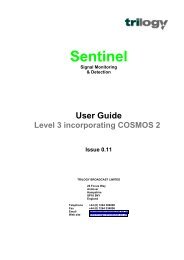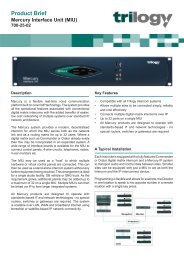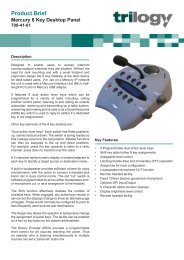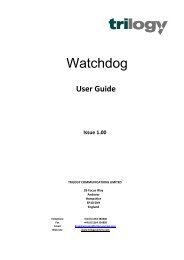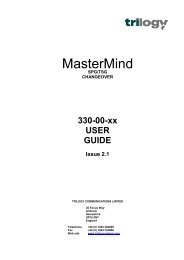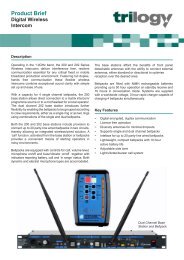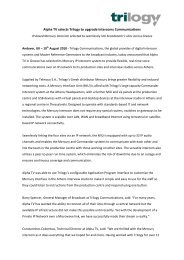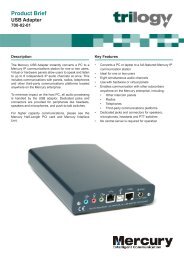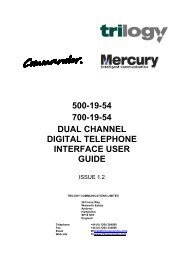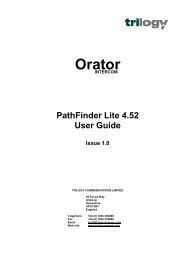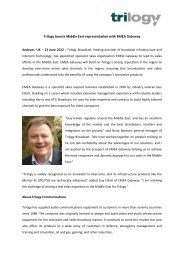PathFinder Software Configuration Guide - Trilogy Communications
PathFinder Software Configuration Guide - Trilogy Communications
PathFinder Software Configuration Guide - Trilogy Communications
- No tags were found...
Create successful ePaper yourself
Turn your PDF publications into a flip-book with our unique Google optimized e-Paper software.
<strong>PathFinder</strong> Version 4.22 User <strong>Guide</strong>8. IFB'S8.1 IntroductionIFB’s or Interruptible Foldbacks are audio routes which can be broken into or interruptedby a third party, replacing the original audio with the 3rd party panel microphone. Thus anIFB comprises three components:• The IFB Destination – usually a 4-wire port.• The IFB Return Audio. This is the “normal” feed to the IFB Destination.• The IFB Trigger which generates the control signal and interrupting audio.The sketch below shows a typical example of an IFB. In this example the Presenter on theStudio floor is normally listening to the Director on Open Talkback. When the Soundoperator presses his speak key to the Presenter he breaks the audio from the Director’smicrophone and replaces it with his Sound microphone.Director PanelSound PanelReturn AudioIFB TriggerIFB DestinationPresenterThis is an IFB in its simplest form. More complicated IFB’s can be configured using the IFBmenu with the following features available:• Multiple IFB Destinations.• Multiple Return Audio Sources.• Multiple IFB Trigger Sources.• IFB audio can be Cut or Dimmed by a pre-selected level.• IFB Triggers can be prioritised to allow individual Triggers to override other Triggerswithin the IFB group.• Logic Inputs can be programmed as IFB Triggers.For further information on the programming of the more complex IFB facilities please refer toChapter 0.<strong>Trilogy</strong> <strong>Communications</strong> LimitedIssue 1Page 53 of 53




